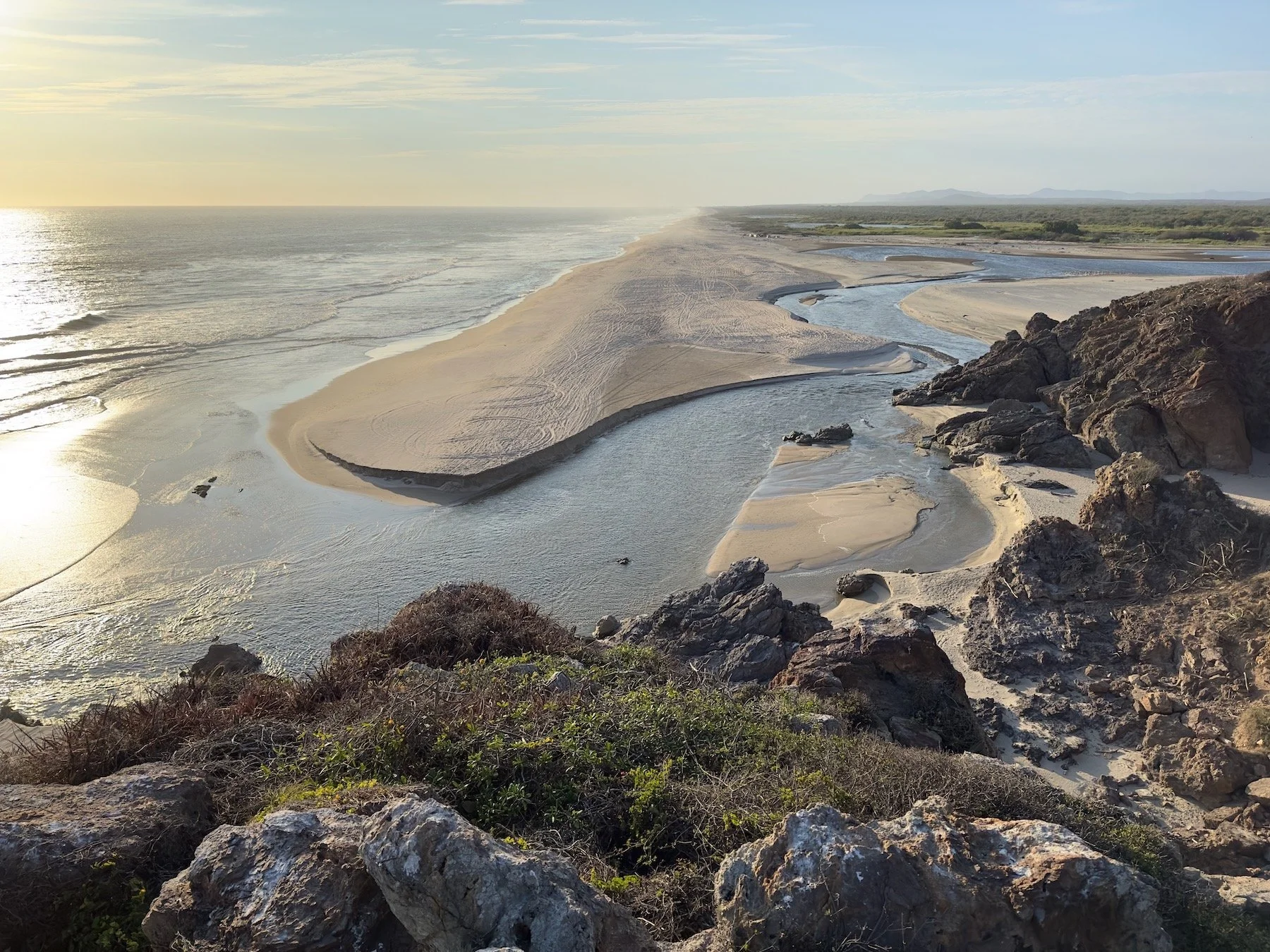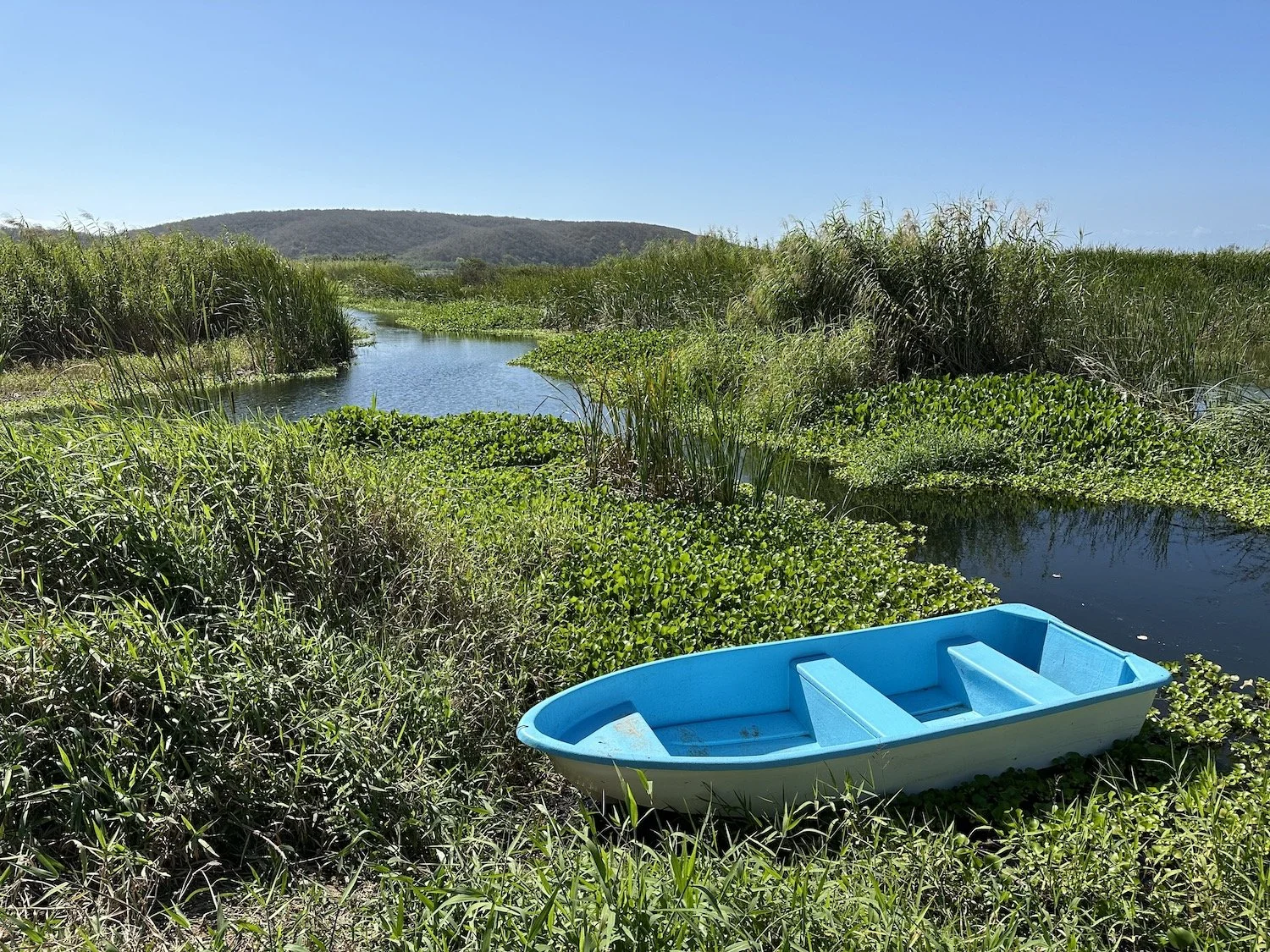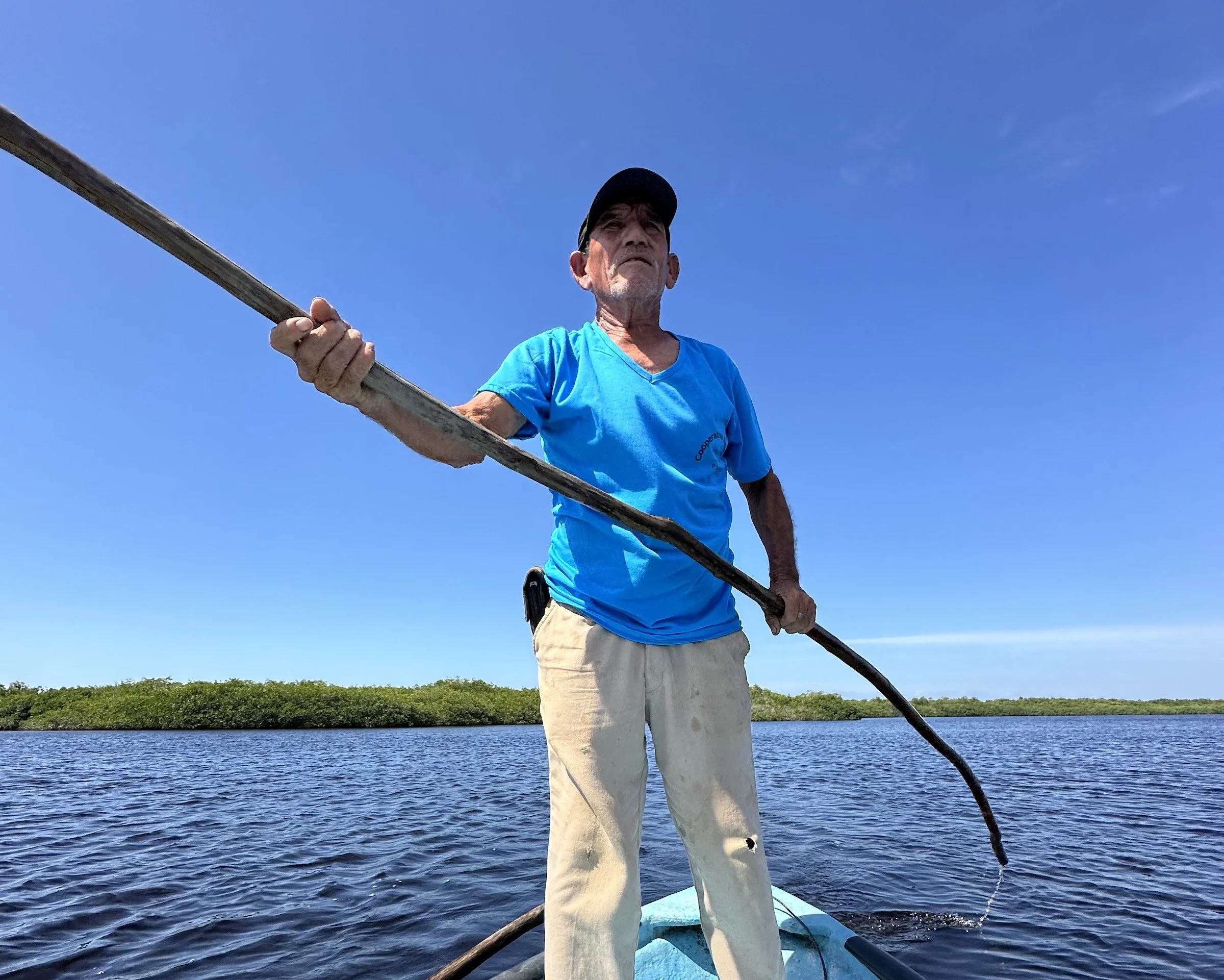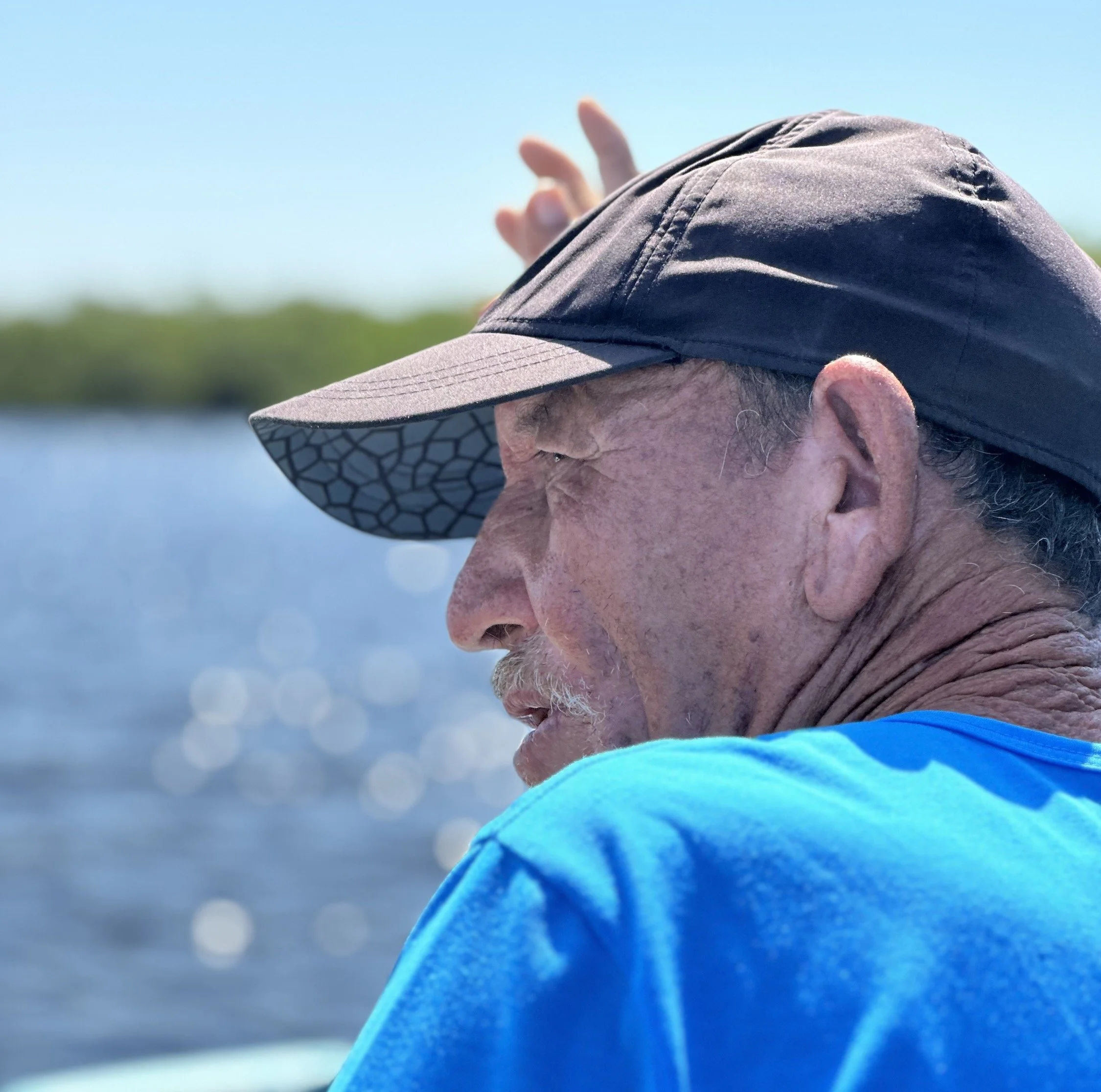Chalacatepec Lagoon
Hydrology and Restoration
The regeneration of the Chalacatepec lagoon has been a collaborative effort between the community, the fisheries cooperative and ejido of Jose Maria Morelos, surrounding stakeholders, and Sierra A Mar. With every planned and executed intervention, the lagoon has improved. Nature is responding powerfully to this combined effort to bring back a natural balance by repairing the hydrological system.
Recognizing the problem
When work first began, in 2023, the system was greatly degraded in its functions, with a loss of surface area and depth of the water body, low oxygen levels due to stagnant water and decay, and displacement of native species. This degradation was due to natural and artificial modification and obstruction of hydrological flows, sedimentation, overfishing, and lack of governance at the site. This created significant losses in income for fishermen in the local cooperative, and a concern by all stakeholders for the future of this natural treasure. Chalacatepec is far more than a fishing spot. It is part of a complex watershed that is at the heart of this region.
The estuary:
Chalacatepec is a beautiful estuary located on the Coast of Jalisco, in the municipality of Tomatlán. It is wedged between two large private developments on the coast, Xala in the north and Las Alamanda in the north, and by the community of Jose Maria Morelos that borders it inland.
Chalacatepec is a RAMSAR* site of international importance as it is a habitat for migratory and resident birds from North America. It also plays a key role in the hydrological regulation of the Costalegre region in Jalisco.
(*RAMSAR sites are wetlands designated as being of international importance under the Ramsar Convention. They are recognized for their biodiversity, ecological value, and their importance in providing livelihoods for local communities.)
A careful approach to build long-term partnerships
The Sierra a Mar team carefully entered this community in 2023, offering technical advice without imposing any actions. The community was, at that time, justifiably suspicious and very protective of an outside intervention. Since then, the collaboration based on mutual respect has resulted in trust and great friendships. There is a common goal and unity that is now leading to impressive outcomes.
On the technical side, the team has been working on the design and planning of hydrological rehabilitation strategies for the lagoon to restore its fishing productivity and ecological integrity. This process has led to the creation of important partnerships with local stakeholders (the José María Morelos fishermen's cooperative and ejido) and with various government agencies, academia, and the private sector (Tomatlán City Council, JICOSUR, SEMADET, CONANP, SADER, CONAFOR, the University of Guadalajara, and XALA).
The outcome of this collaborative approach has been a work plan for the hydrological rehabilitation of the Chalacatepec lagoon and the reactivation of the Chalacatepec RAMSAR site committee.
As a result of the 2024/25 interventions, dammed water with very low dissolved oxygen levels was released and better-quality water and aquatic species of interest for fishing from the San Nicolás River were able to make their way back into the lagoon. This has resulted in improved water quality at key points in the lagoon, better catches for the cooperative society in the first quarter of 2025, and better and safer access to the lagoon with the completion of the dock. Confidence among local stakeholders has also been restored, and agreements are in place for the coordination of activities within the Ramsar committee.
First interventions have shown great results. The removal of water lilies from the external channel, the management of agreements for the control of the floodgate that regulates water flow, and the construction of a small pier to improve access, have created a series of smaller, less expensive interventions that can be controlled and measured. This enables us to react to unintended consequences and course correct if necessary.
Shrimp Farming
In recent years, the fishing cooperative conducted shrimp farming activities in the lagoon with introduced shrimp larvae, that showed promise, but were inconsistent from year to year. The Sierra A Mar team assisted with diagnostics and monitoring methods to identify problems and suggest improvements in farming techniques. The productivity increased quickly along with regenerative practices that also supported lagoon health. An unexpectedly rapid outcome of the hydrological interventions that helped bring in cleaner water, was that the fishlife and the natural shrimp population is showing already showing great promise. Enough to convince fishers that introduced larvae will not be needed this year. Observations this season will show whether this return to keeping a natural system will be sufficient to support the fisheries demands of the cooperative.
Additional programs in progress:
Soil conservation and restoration work in the area surrounding the lagoon to mitigate the sediment runoff that causes silting of the water body. This includes the promotion of regenerative livestock practices and reforestation of livestock plots that can be used as living fences, forage banks, or shade trees.
Improvement of fisheries sustainability and the diversification of economic activities.
An Environmental Management Unit (EMU) for the management and conservation of the American crocodile (Crocodylus acutus).
The development of non-extractive activities in the lagoon, such as nature tourism.
2025 Goals
The next phases of the work plan are exponentially bigger. They encompass the rehabilitation of the 5-kilometer-long main channel that connects the lagoon with the San Nicolás River and the Pacific Ocean, and the removal of some older concrete remains near the channel entrance that obstructs the water flow.
To achieve this, the first task is to prepare a Preliminary Justification Report (DPJ). These interventions are expected to multiply the positive results already being observed in fishing and water quality in the lagoon

































